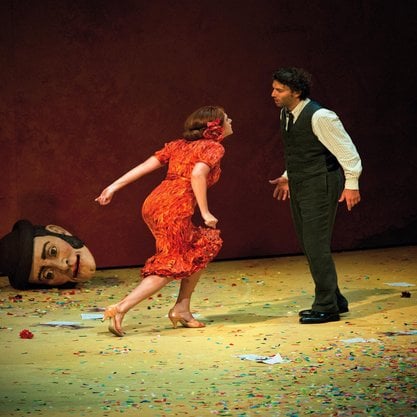Article
Angura By Swain, John D.
Article
Angura has been called the most effective fusion of art and politics from Japan’s turbulent years of social protest in the 1960s and 1970s. Angura is the Japanese contraction for the term ‘andaaguraundo engeki,’ or ‘underground theatre.’ Although Japan borrowed the term ‘underground’ from the counterculture movement in the U.S. and England in the 1960s and applied the word to many different aspects of evolving youth culture, the contraction angura refers only to the theatre form. Some scholars conflate ‘angura’ with ‘shōgekijō-undō’ (‘the little theatre movement’), while others argue the two are separate movements within the same stream of counterculture theatre beginning in 1960.
The aesthetic genesis of angura was the growing dissatisfaction of Japan’s first post-WWII generation with shingeki. The generation that came of age in the late 1950s and 1960s was hungry for alternate forms of theatrical expression. In the political arena, that same generation was mobilized by opposition to renewals of the Japan/U.S. Security Treaty in 1960 and 1970. Although angura gave highly effective artistic voice to the politics opposing treaty renewal, the fusion of art and politics in angura covers a wide spectrum that includes apolitical authors and directors such as Betsuyaku Minoru (b. 1937) and Terayama Shūji (1935–83). Others at the heart of the angura phenomenon are Kara Jūrō (b. 1940), Suzuki Tadashi (b. 1939), Ōta Shōgo (1939–2007), and Satoh Makoto (b. 1943).
